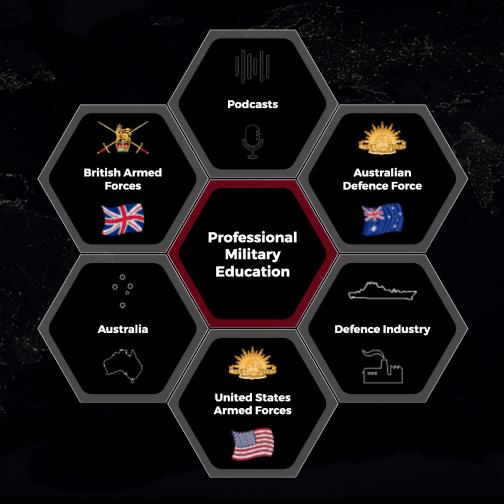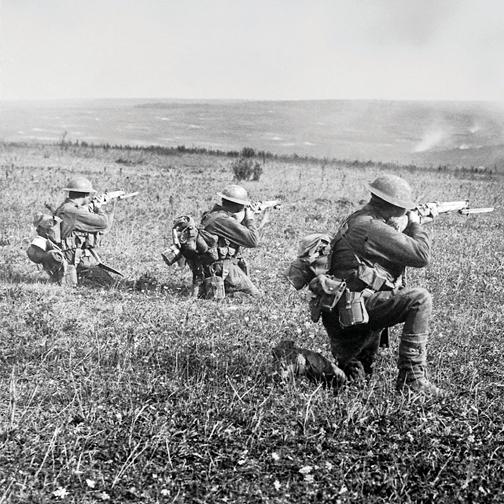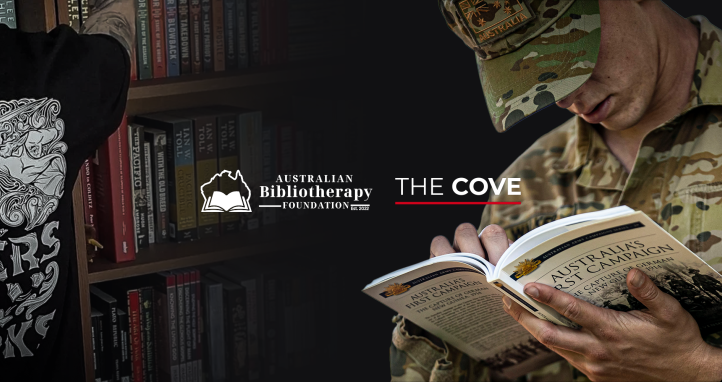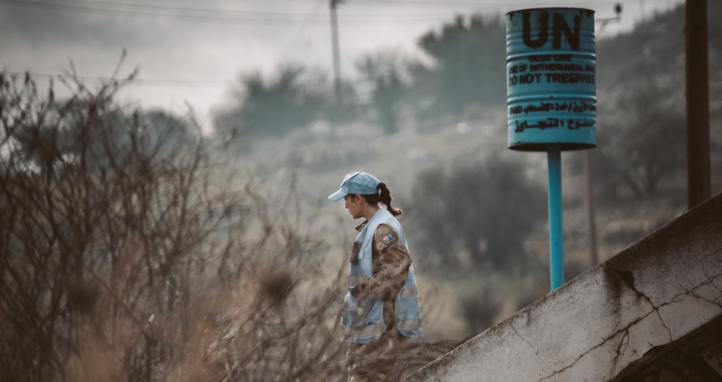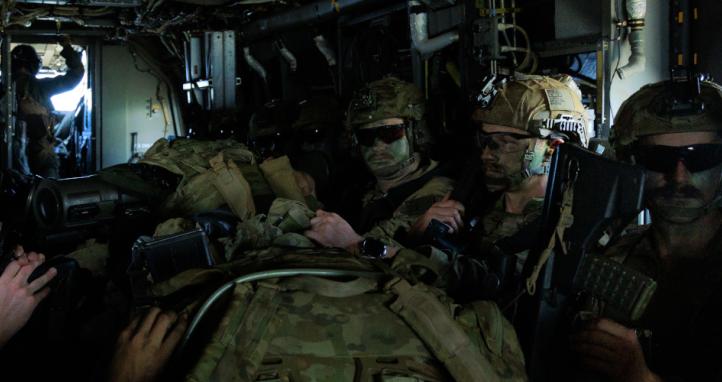INTRODUCTION
When the term M2MC was first touted about amongst the staff and commanders of the French Army, I thought they were referring to a new capability acquisition never before seen. Alas, my eager assumption was wrong; M2MC is an abbreviation for the French term “Multi-Milieu Multi-Champ”, which literally translates to “Multi-Medium Multi-Field”. Put another way, Multi-Domain Operations (MDO).
This paper describes the French Army’s approach to Multi-Domain Operations, as well as revealing their new organisational structure force model and framework to achieve MDO, including a detailed description of the French Army’s new Alpha Commands.
BACKGROUND
The geopolitical context of the modern battlefield requires being effective not only in the contact or kinetic zone, or forward area of operations, but also in depth, behind enemy lines, where operational superiority is key, especially in the early days of a conflict. In some cases, this is hundreds of kilometres from the front line. Furthermore, there is a requirement to be operationally resilient in the rear and/or supporting zones, where logistic lifeline operations take place particularly if the conflict endures, for example, shifting from a high intensity battle to one of enduring intensity. Deep, close, and on the flanks, it will be necessary to know how to out-manoeuvre the enemy through hybrid actions. To guarantee the French Army’s land operational force superiority in these three areas, new, considered, and relevant organisational structures were considered critical. In response, the French Army established Alpha Commands.
The French Army’s Alpha Commands are the new operational commands dedicated to supporting corps and divisional level combined arms combat in the key areas of hybrid warfare, deep strike, theatre support, and command and control of the rear area of operations, with a view to execute and achieve MDO. They are designed to support the French Government’s stated objective of the French Army being capable of deploying a two brigade division – and supporting elements – within 30 days by 2027.
Comprising of four commands, they are transverse organisations supporting the deployed Force, as follows:
- Effects in Depth and Intelligence Command (CAPR – Commandement des actions dans la profondeur et du renseignement) – 1;
- Army Special Operations Command (CAST – Commandement des Actions Spéciales – Terre) – 2,
- Combat Support and Theatre Logistics Command (CALT – Commandement de l’appui et de la logistique de théâtre) – 3; and
- Digital and Cyber Command (CATNC – Commandement de l’appui terrestres numérique et cyber) – 4.
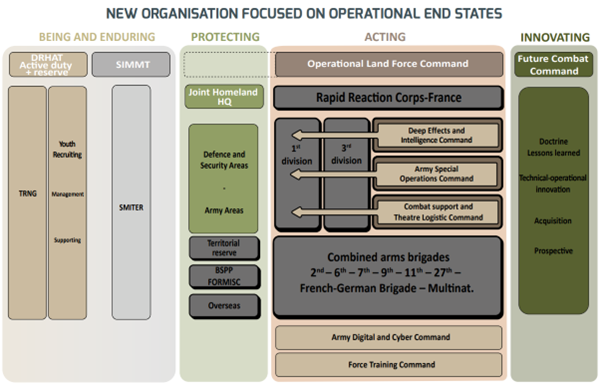
Figure 1: French Army Organisation showing the four alpha commands as traverse elements supporting the Force
ALPHA COMMANDS
"Alpha commands are not operational commands but incubators that will generate operational capabilities."
Lieutenant General Toujouse
Commander CFOT
COMMANDEMENT DES ACTIONS SPÉCIALES – TERRE (CAS-T) // ARMY SPECIAL OPERATIONS COMMAND
Operational tool for indirect strategies

Figure 2: The CAS-T organisation showing the French Army sub-units
At the beginning of 2024, Special Forces Command (CFST) became the Special Actions Command (CAST). Nearly 700 additional military personnel from the Land Centre for Military Partnering (Centre Terre pour le partenariat militaire, CPMO), the Combined Arms Centre for Actions on the Environment (Centre interarmées des actions sur l’environnement, CIAE) and the 712th Cyber Company have augmented the CFST units as part of the wider reorganisation of the French Army’s Forces Command, in order to create synergies between key hybrid capabilities and optimise the use of all air-land capabilities.
The CAST is a major stakeholder in hybrid and indirect warfare manoeuvre. In addition to special operations, the specialities of this unit are being expanded with the integration of combat actions in depth through to digital support operations, shaping and operational military partnership.
Commanded by a major general, the unit is assisted by a ‘special forces’ and a ‘hybrid warfare’ specialist deputy, responsible for the orchestration of all capabilities to the benefit of the French Army. In the same manner as its historical joint command authorities of the Special Operations Command and the Military Intelligence Directorate, the CAST responds to requests from Joint Operations Command (CPCO), Cyber Defence Command, and the French Army’s European Land Command (CTE).
The historical Special Forces units, the 1er régiment de parachutistes d'infanterie de Marine (1er RPIMa), the 13e Régiment de dragons parachutistes (13e RDP), the 4e Régiment d'hélicoptères des forces spéciales (4e RHFS) and the Compagnie de commandement et de transmissions des forces spéciales (CCT-FS) have now been augmented with the Operational Military Partnership Centre (CPMO), the Joint Centre for Environmental Action (CIAE), and the 712th Cyber Company.
While retaining its primary role of providing capability outputs to the Special Operations Command (COS) and the Directorate of Military Intelligence (DRM), the CAST aims to plan and execute indirect strategies designed to effectively combat strategic competitors challenging global freedom and peace in all domains, particularly in cyberspace.
While the specific features of special operations remain unchanged, it now covers the entire spectrum of hybridity, from deep strike to digital operations, while integrating shaping operations (which incidentally was the sixth function of the French Military published in the 2022 National Strategic Review) and operational military partnership.
To achieve this, the CAST has three priorities:
- to develop expertise in hybrid warfare actions in order to better counteract any strategic threats/competition;
- to act as a cell for shaping actions and to steer the partnership function for the French Army; and
- strengthen existing links with the land forces.
COMMANDEMENT DE L’APPUI ET DU RENSEIGNEMENT DE LA PROFONDEUR (CAPR) // EFFECTS IN DEPTH AND INTELLIGENCE COMMAND
Incubator for combat in deep zone
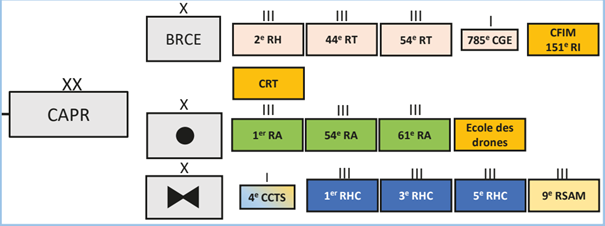
Figure 3: The CAPR organisation showing the French Army sub-units
Created in 2024, the CAPR is designed to reinforce the combat power of land forces in depth, behind enemy lines. Comprising of the 4th Air combat Brigade (BAC), the 19th Artillery Brigade (B.Art), and the Intelligence and Cyber-Electronics Warfare Brigade (BRCE); the CAPR supports the two Army divisions by providing command, action, and support capabilities in three dimensions: fires in depth, ground-to-air defence, and intelligence and electronic warfare. The CAPR can contribute to reaching the enemy between 50 and 500 kilometres behind the enemy line. To enable land forces to take coordinated action in this area of the battlespace, the CAPR is placed at the centre of joint operational planning and preparation. It contributes to accelerating the intelligence-acquisition-targeting-neutralisation loop, taking lead on the analysis on the capabilities of in-depth resources to facilitate the emergence of procedures, and gives the means to improve the interoperability required for their action.
Lastly, it continues to develop the intelligence support system required from the time of contact, via an expanded network system. This operational implementation of the intelligence chain extends from the brigade to the deployed units with an objective to be at the heart of joint operational preparation for units operating in this area of the battlefield to develop their tactical integration and increase the responsiveness and effectiveness of coordinated action beyond the contact zone.
Equipped with a HQ and command element, it will provide the land forces with the C2 action and support capabilities needed for the corps and division to undertake combat in depth. It does this by a continued development of the intelligence support to identify the likely enemy via an intelligence system extended to the entire intelligence chain (intelligence centres of the intelligence brigade – intelligence cells of the tactical units along with staff and army units deployed on operations). This operationalisation of the army's intelligence chain supports the regionalisation of the Army’s two divisions and giving the subordinate brigades a sector of responsibility. In this way, it will contribute directly to preserving the joint commanders' freedom of action and increasing the coherence of the land-air domain of operations by promoting lethality, battlefield transparency, and force protection.
COMMANDEMENT DE L’APPUI ET DE LA LOGISTIQUE DE THÉÂTRE (CALT) // COMMBAT SUPPORT AND THEATRE LOGISTICS COMMAND
Rear zone action integrator
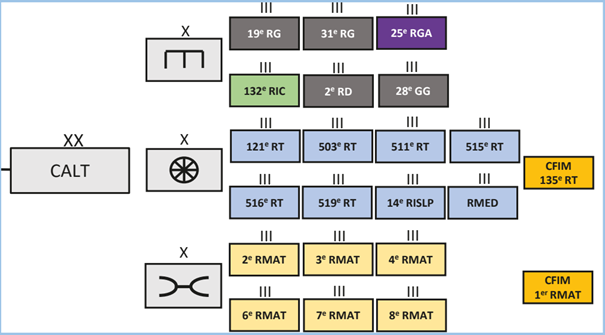
Figure 4: The CALT organisation showing the French Army sub-units
Land Forces Logistics Command, the Land Forces Maintenance Command, and the organic sub-units of the French Army’s Forces Command were brought together in a new divisional-level structure that will enable new synergies in operational support through the combination and coordinated action of three subordinate brigades. The CALT consists of a headquarters and three specialised brigades – a logistics brigade (BLog), a maintenance brigade (BMaint), and an engineer brigade (BGen) with specific and complementary capabilities.
Its main mission is to enable a two-brigade division and its organic resources to be deployed within thirty days in a high-intensity combat environment, and to support them autonomously or as part of a coalition. This ambition implies modernising the French Army’s framework model and adapting current organisation structures to improve operational responsiveness.
Accordingly, the CALT provides support for force deployment and ensures the continuity of the logistics chain from the operational to the tactical level, from the rear and in support liaison with the National Support Base – notably mainland France. It is supported by a divisional support group which deploys as close as possible to the force to maximise the responsiveness of support. The CALT units produce effects throughout the area of operations, from the National Support Base mainland (strategic supply, air and sea support), in the combat zone and in the depth of the operating battlespace.
The CALT brings together all the Land units involved in organising the combat service and combat service support chain and provides the following permanent support missions for the forces:
- Liaising with the French Army’s DTR-A equivalent (SIMMT – Structure Integrée du maintien en condition opérationalle des matériels terrestres) and the HQ 2 (AS) Division equivalent – HQ National Territory Combined Arms (EMIA-TN) – to ensure the readiness of the land force component’s ramp-up and transition to steady-state land operations;
- Participate in training and preparation of the national support base for the engagement of the land force;
- Integrate support from the operational preparation phases and during deployed actions;
- Command and equip the various logistical support groups in operations;
- Ensuring the continuity and fluidity of supply chains to the force involved from the moment they enter the theatre until they are completely withdrawn.
Taking into account the management of area distribution and the force's vital logistic flows is the key to mission success. Based on this fundamental principle, the lifeblood of the CALT is to be a facilitator and a catalyst enabling the commitment of the force and creating the conditions for the continuation of the battle until mission end state.
In operations, from the rear zone and in liaison with the National Support Base, the CALT integrates all logistical functions by deploying a joint theatre support group command post (PC GSIAT). In this way, it provides support for force deployment and ensures the coherence and continuity of the logistics chain between mainland France and the area of operations. As close as possible to the deployed units, the CALT also provides a divisional support group generated from its brigades in order to maximise the responsiveness of support and thus increase the endurance and agility of the deployed force and its effects throughout the area of operations.
Although the centre of gravity is in the rear zone, the CALT units produce effects from mainland France (supply/routing/logistic support) and throughout the operational zone and into the contact zone (with specialised maintenance support capabilities) and into the depths (with specialised CBRN, combat engineer, and geospatial support units in particular).
COMMANDEMENT DE L’APPUI TERRESTRE NUMÉRIQUE ET CYBER (CATNC) // ARMY DIGITAL AND CYBER COMMAND
Integrator of digital and cyber technologies

Figure 5: The CALT organisation showing the French Army sub-units
The CATNC ensures the integrity of the organisation, operation, use and development of the digital support and cyber domains in the fight against cyber warfare. It is at the centre of data control, a key factor in operational superiority. The CATNC has a brigade that meets the needs of the Force in terms of exchanging, processing and securing information.
‘The CATNC faces up to new operational realities by supporting forces in their kinetic and non-kinetic manoeuvres,’ explains Major General Norbert Chassang, Commander of the CATNC.
It supports both an operational permanent posture and the deployment of human and materiel resources for the operational readiness of its subordinate units and operational headquarters. It also contributes to digital security policy and the development of cyber doctrine. It relies on a denser reserve-staff and specialist personnel base that is integrated into the operation of the staff and the missions of its subordinate regiments. It also has partnerships with digital software private enterprises, which enhances its ability to better combat cyber warfare.
EARLY OUTCOMES AND LESSONS FOR THE AUSTRALIAN ARMY
As indicated earlier, the French Army reorganisation was driven by several converging elements that challenged traditional force structure models. They needed to respond more rapidly to crises, counter increasingly sophisticated cyber threats, and always maintain competitive edge against near-peer adversaries. They foresaw that integrating digital technologies became essential to streamline decision-making and improve battlefield situational awareness within a MDO framework.
It remains early days, but initial indicators show mixed progress across the different branches of the French Army. Artillery and newly formed cyber units realigned to the new Alpha Command structures quickly, benefiting from clear mission sets and dedicated digital tools. In contrast, Logistics elements and Communication Information System (CIS) call signs faced slower uptake, highlighting the challenges and complexity of overhauling legacy support functions and networks.
The Australian Army can draw helpful insights from this French Army transition, particularly in seamlessly embedding cyber and digital intelligence into combat formations. Centralising key decision hubs while empowering tactical units with real-time data could enhance responsiveness across MDO. Prioritising mobilisation for change and targeted upskilling will be crucial.
CONCLUSION
The creation of the CATNC, CALT, CAS-T, and CAPR is a reorganisation of the French Army’s organic capabilities augmented by key and hybrid capabilities into transverse enabling units. Adopted from 2024 onwards, the Alpha Commands strengthen the combat power of the Army’s fighting force in deep, close, and rear zones on the battlefield. The upshot is achieving MDO and ultimately possessing operational superiority. Collaboration with the French Army units, notably their Alpha Commands, on joint exercises like Exercise Talisman Sabre, focused on digitisation integration, will help adapt the Australian Army’s own force structure posture.
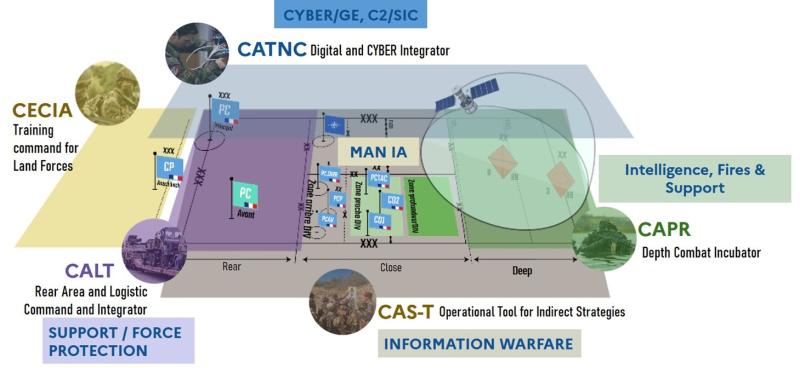
Figure 6: The disposition of the Alpha Commands on the Battlefield
